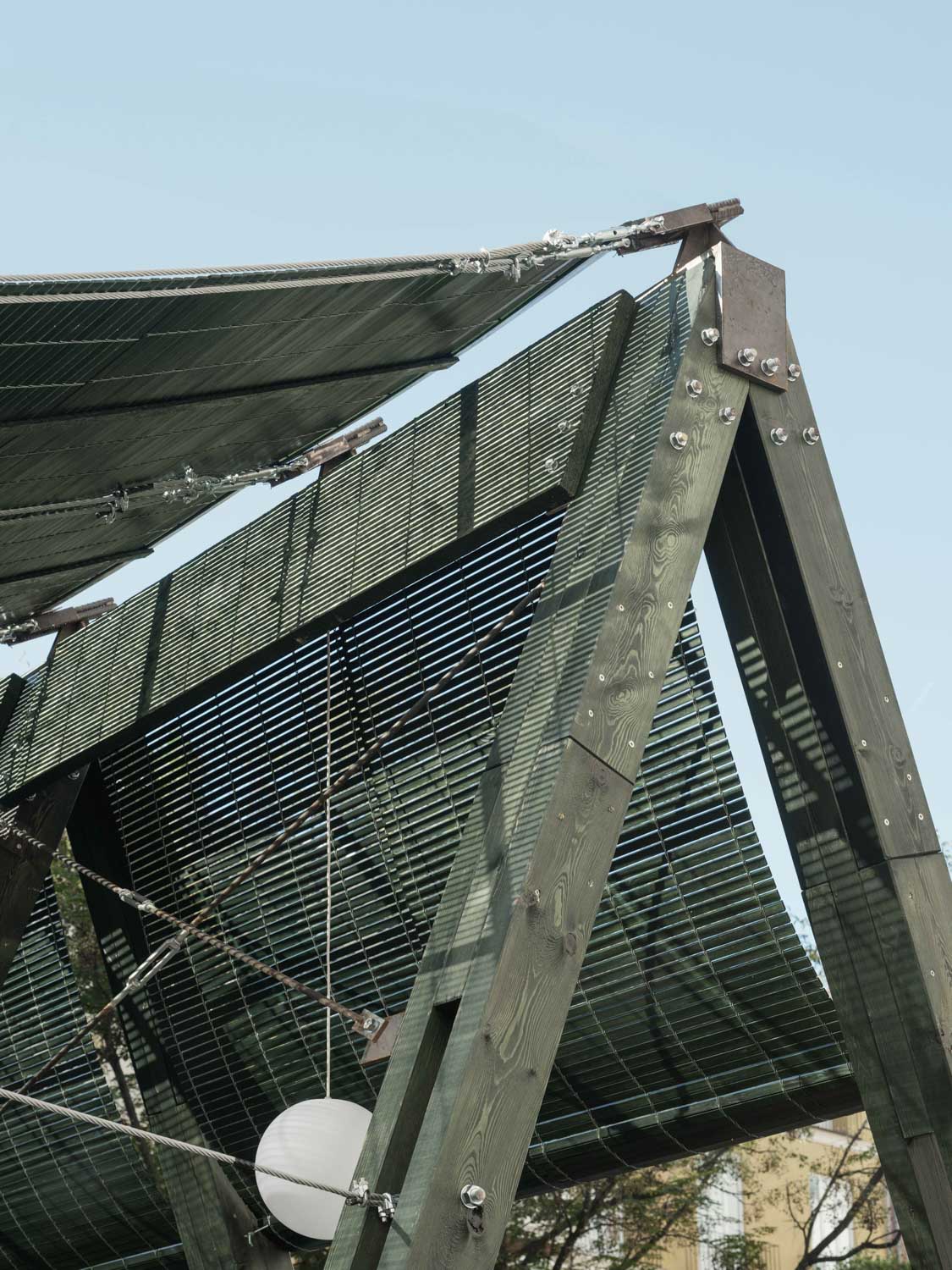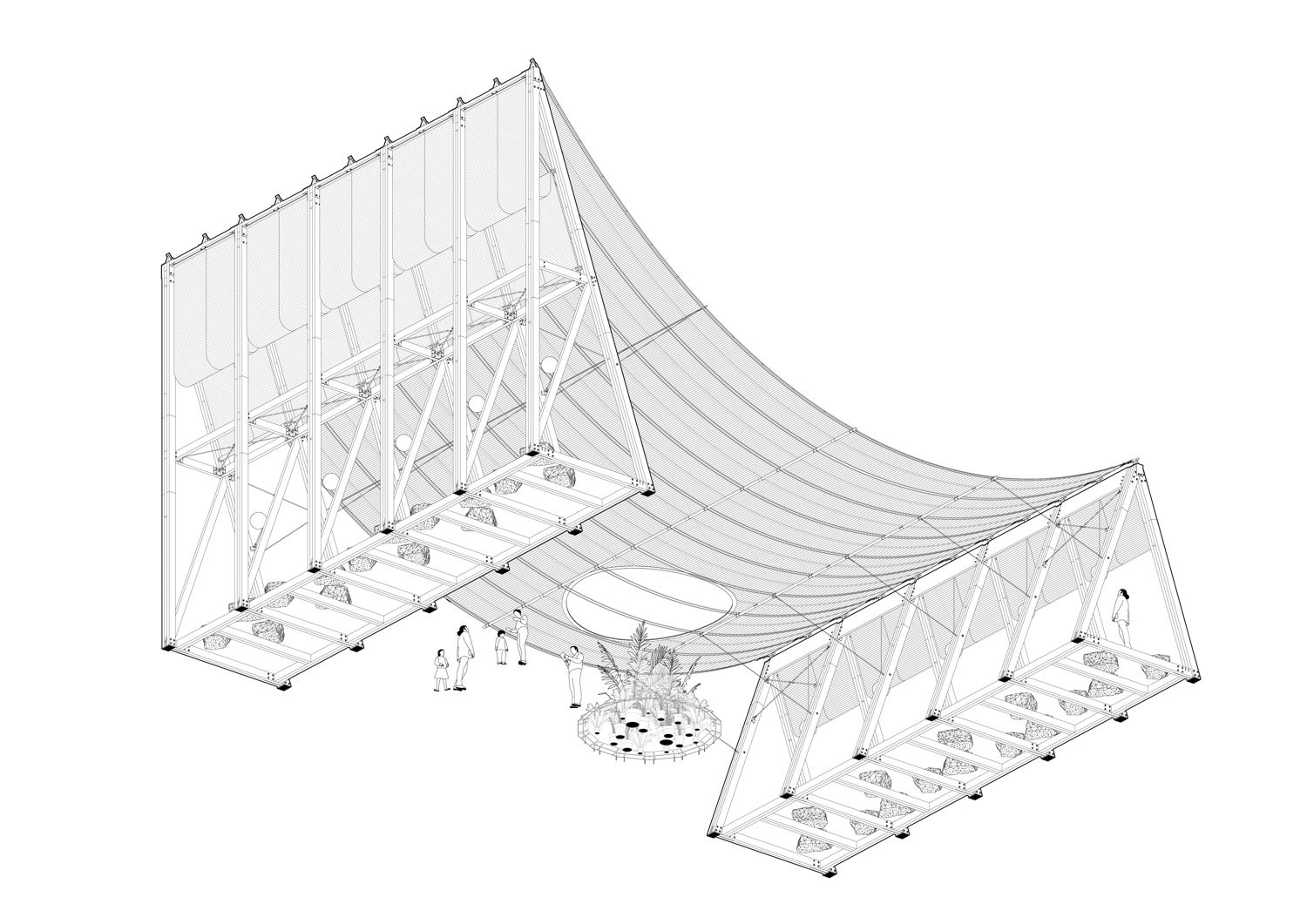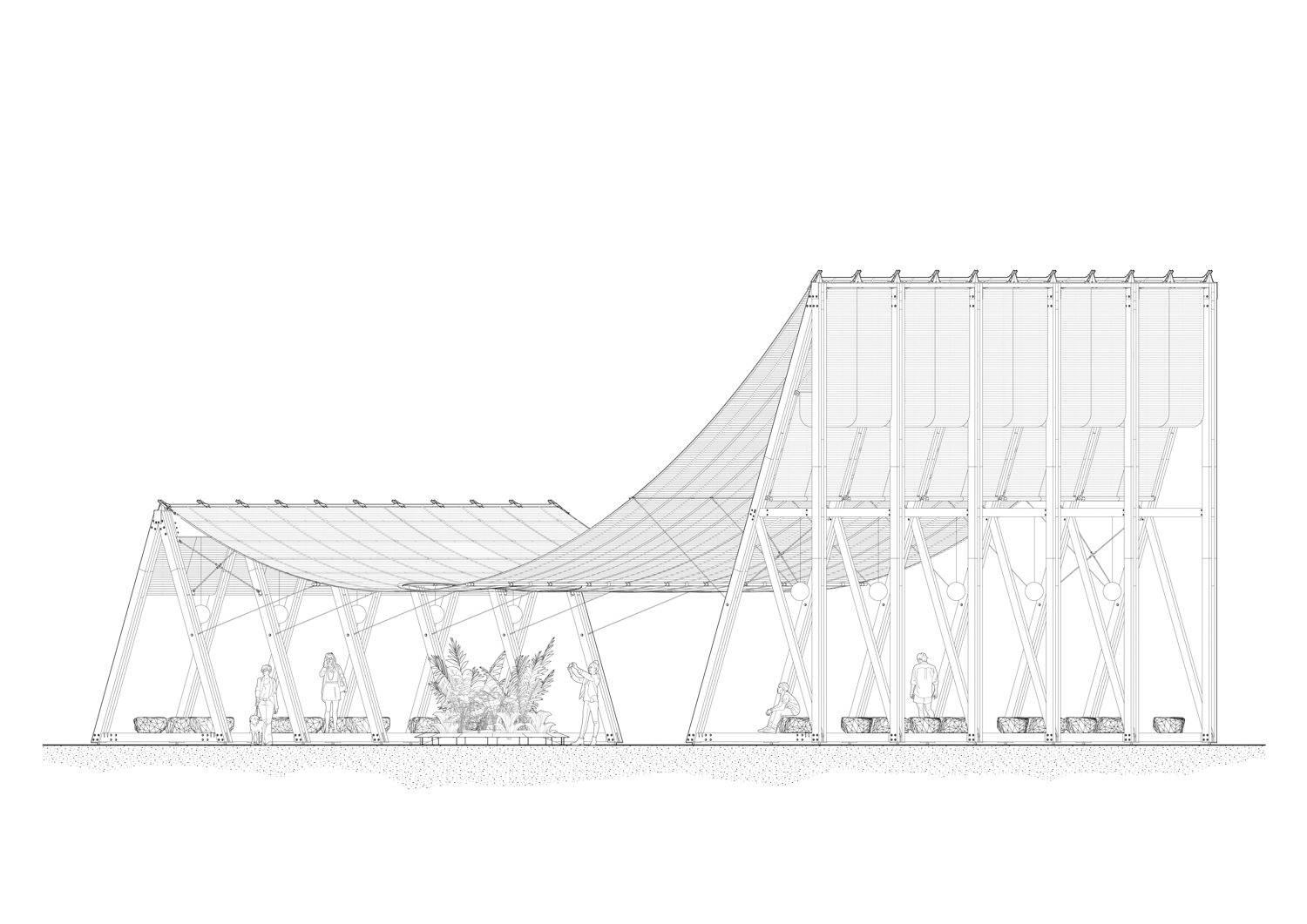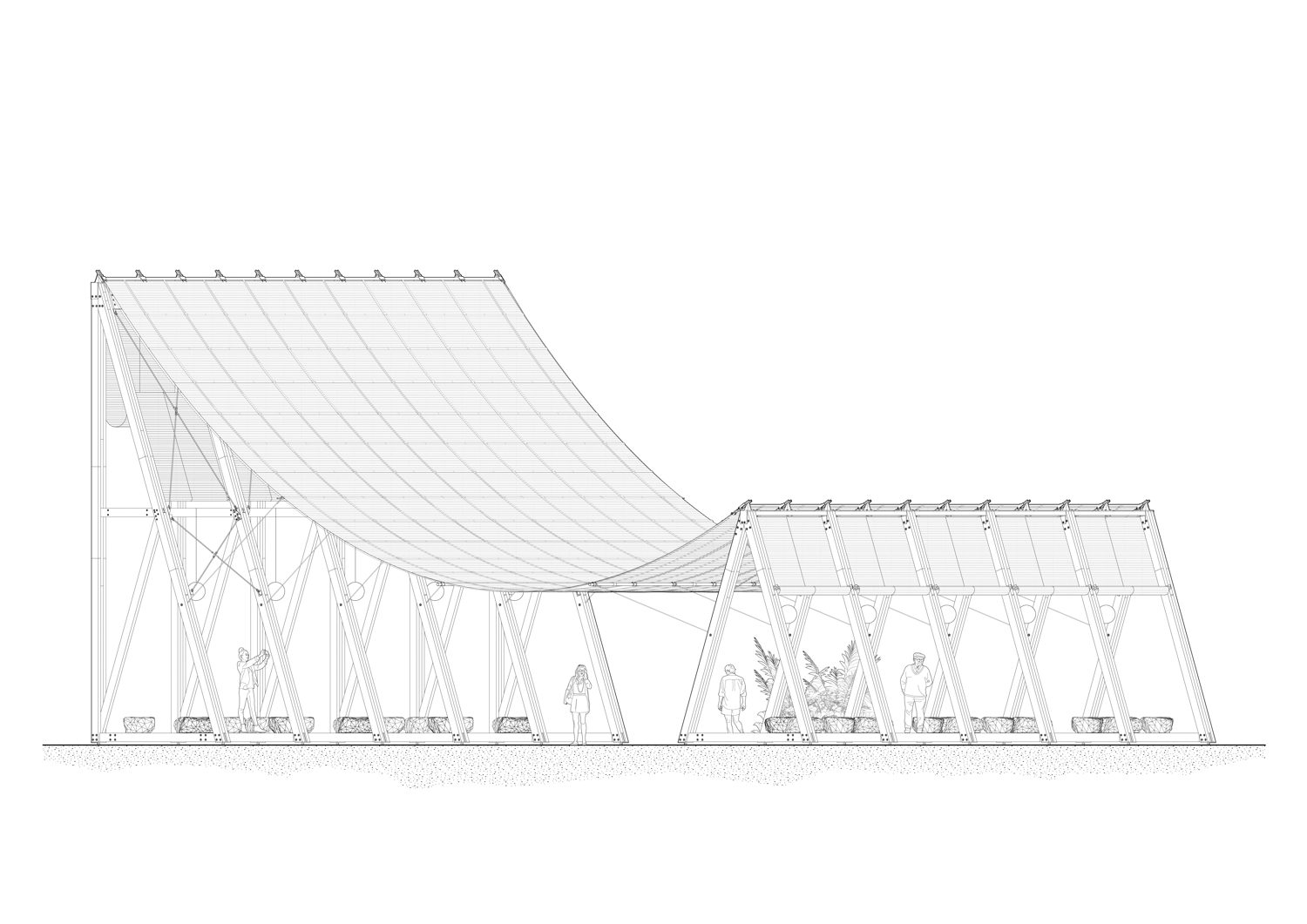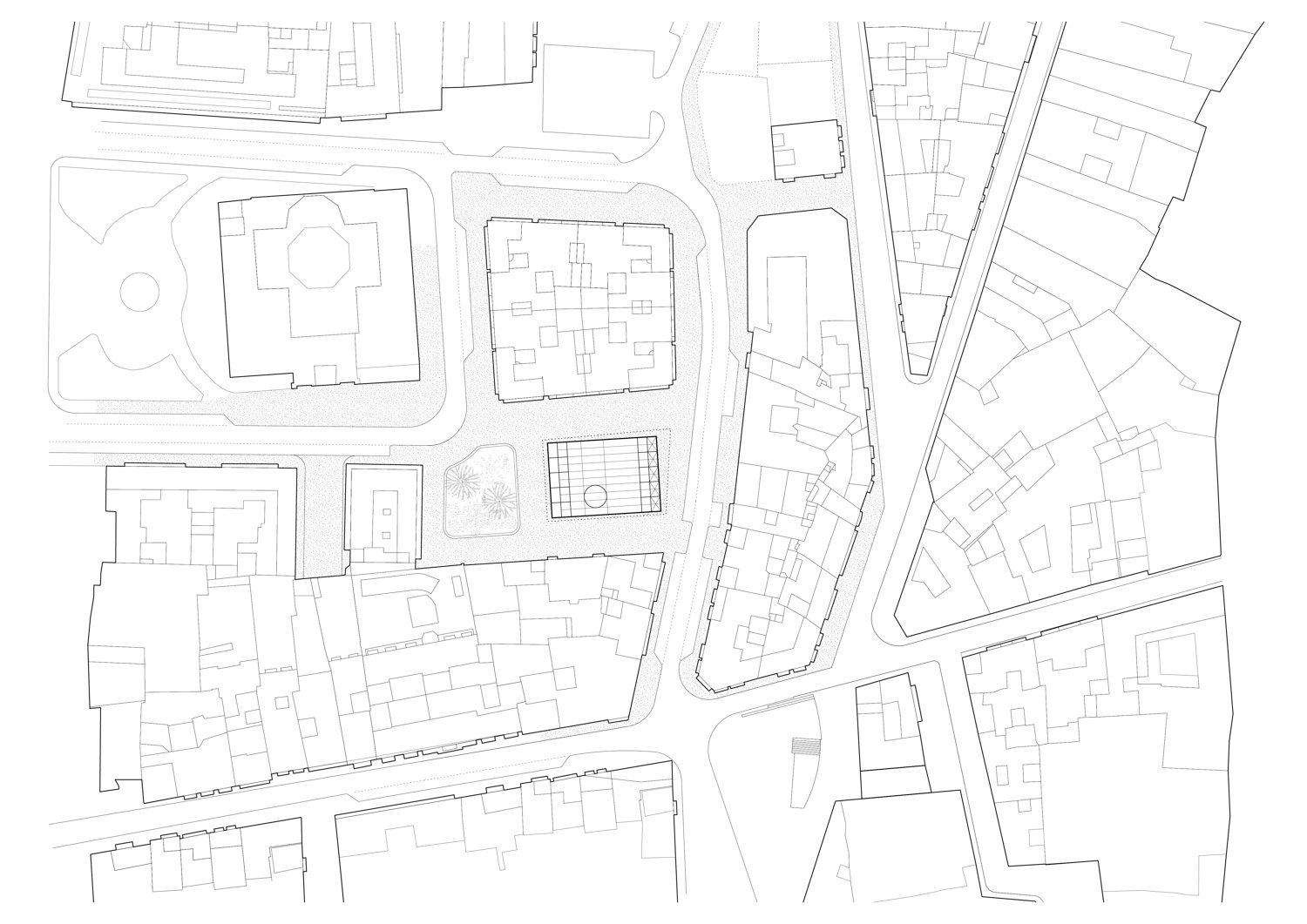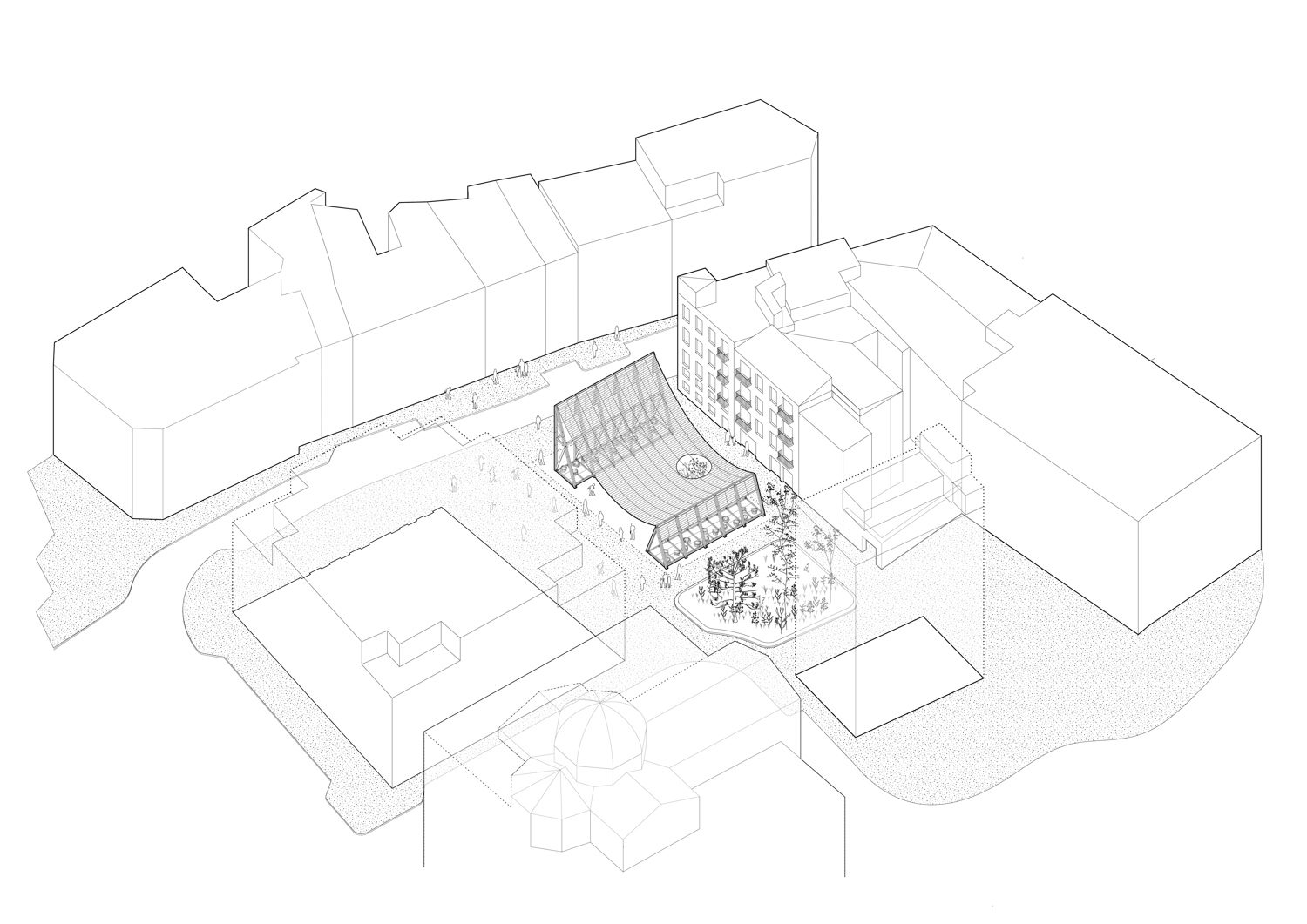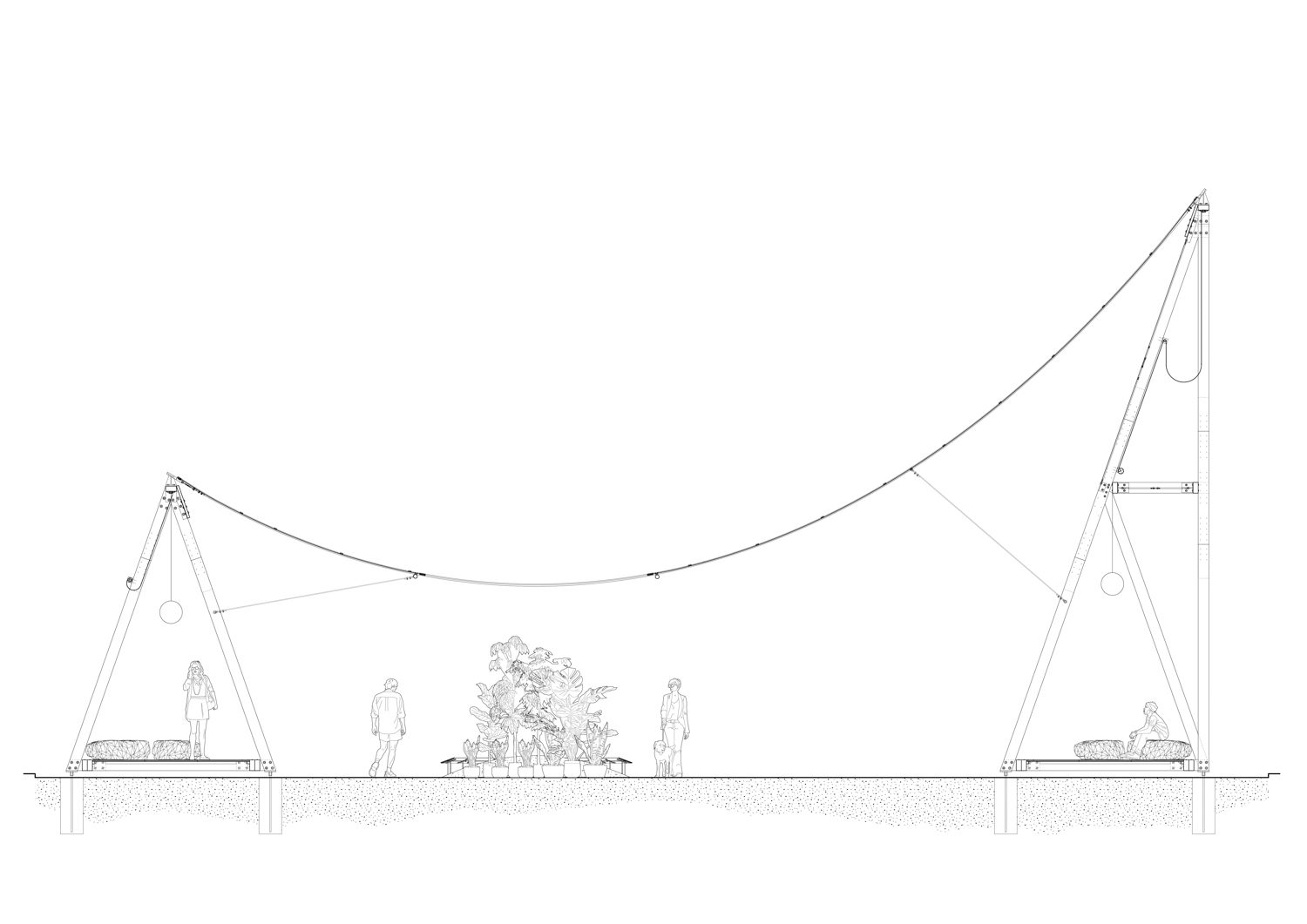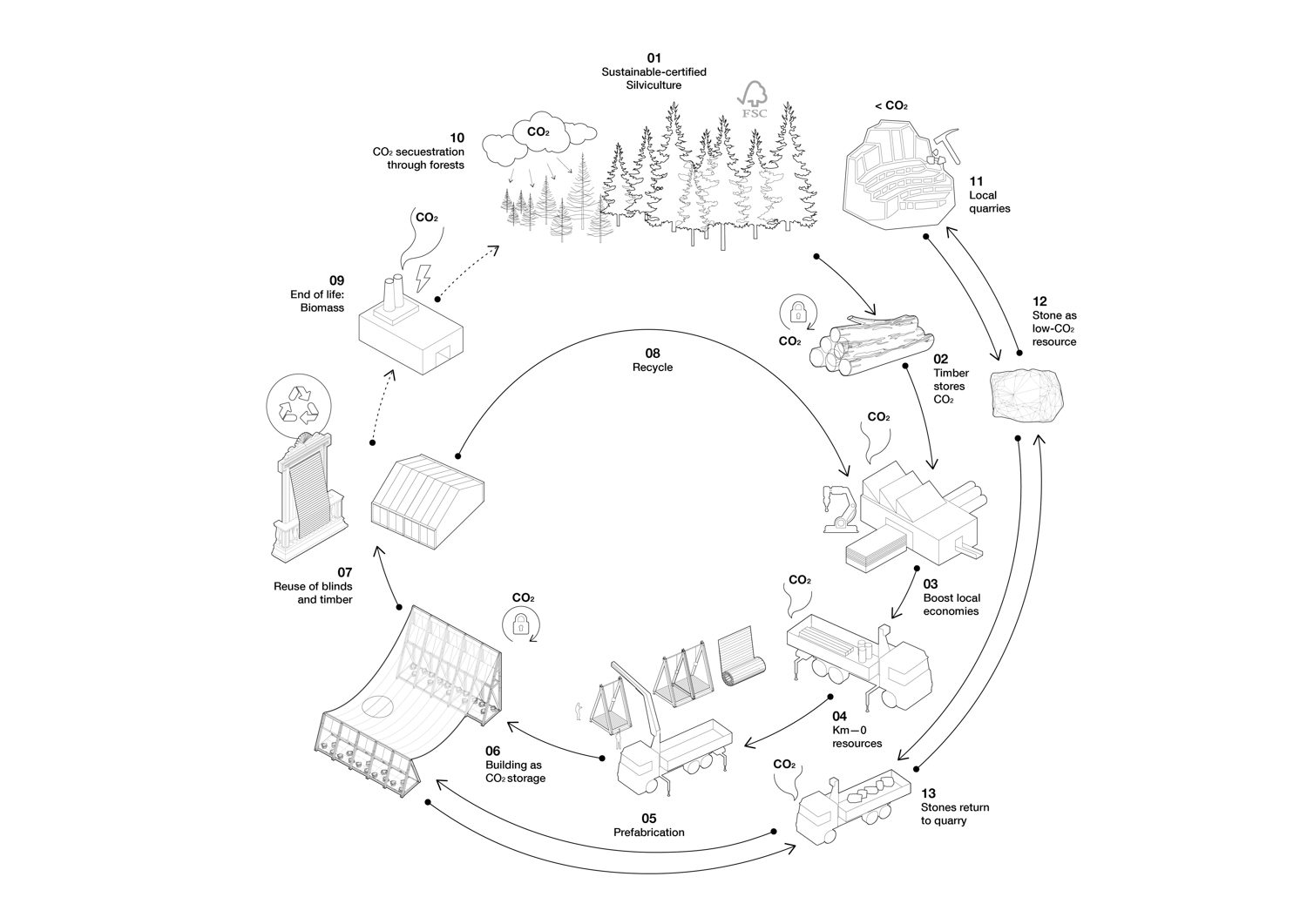MANUEL BOUZAS UTILIZES ‘BLINDS’ AS A ROOF WITH HIS PAVILION ‘MEDITERRÁNEO’ WHICH BRINGS THE QUIET PLAZA OF VALENCIA IN SPAIN BACK TO LIFE DURING THE TAC! URBAN ARCHITECTURE FESTIVAL 2023
TEXT: PRATCHAYAPOL LERTWICHA
PHOTO: LUIS DIAZ
(For Thai, press here)
Ever since dealing with heat became readily manageable with a simple switch that turns on an air conditioner, other components, such as blinds, which once had their own functions in assisting with interior temperature relief, are now viewed as unneeded and are beginning to lose their appeal. But as the energy and environmental crises have become a harsh reality everyone on the planet is facing, blinds have proven to be an excellent aid in protecting a building from excess heat without relying on excessive energy use. Spanish architect, Manuel Bouzas, reintroduces the importance of blinds with his pavilion ‘Mediterráneo’ at TAC! Urban Architecture Festival 2023.
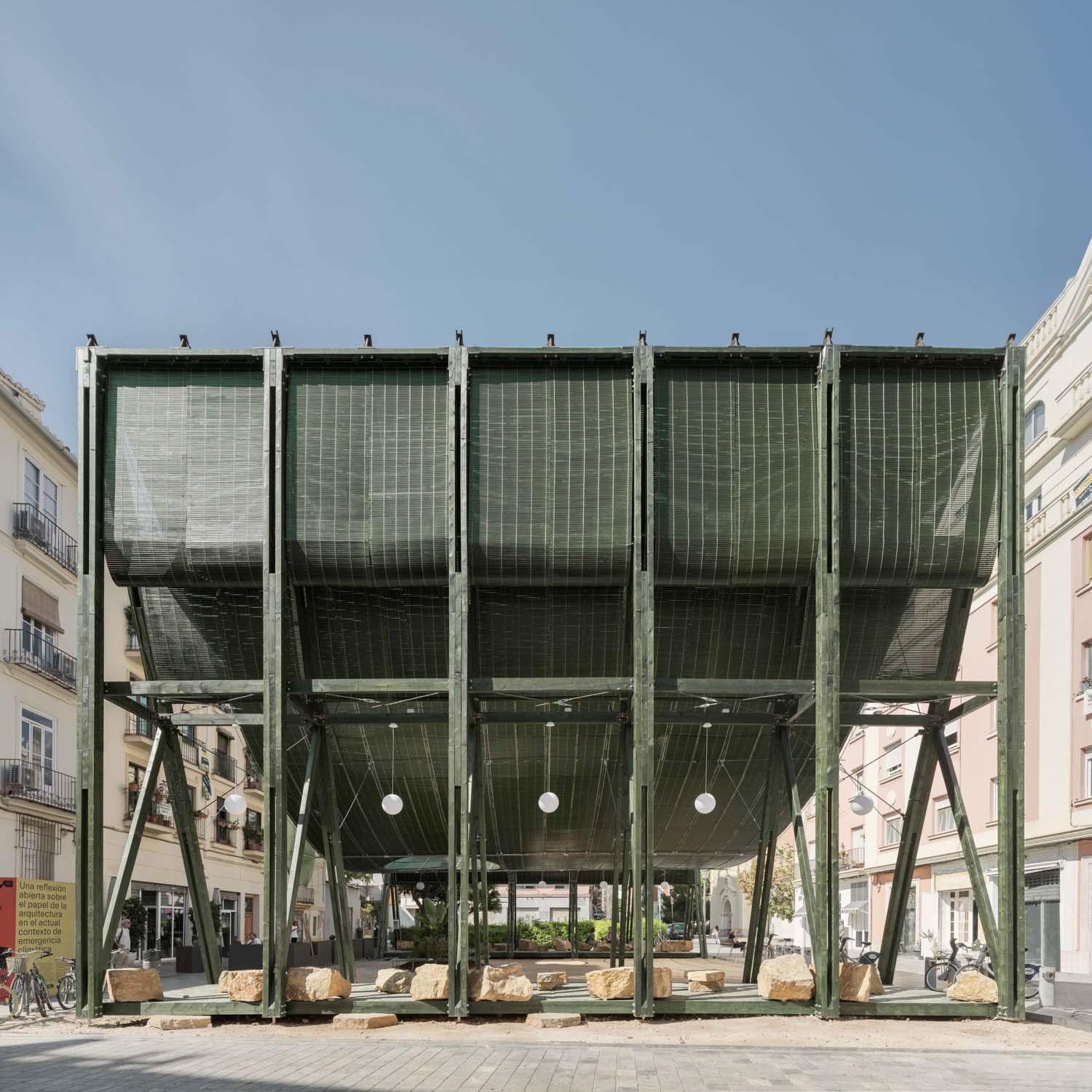
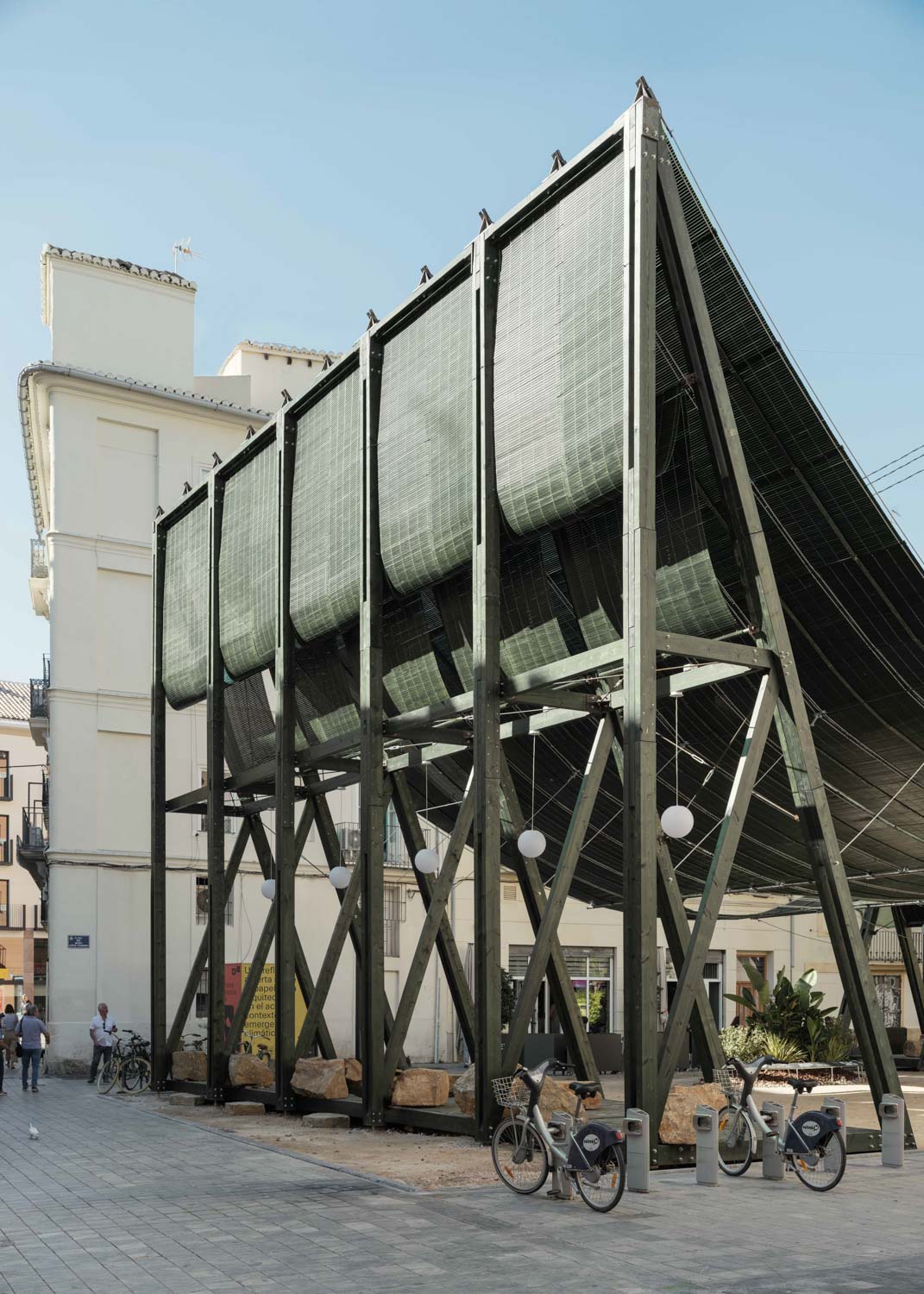
TAC! Urban Architecture Festival 2023 is an annual event held by the Ministry of Transport, Mobility, and Urban Agenda of the Spanish Government. Its goal is to invite and encourage people to participate in dialogues on urbanism and the role and impact of architecture on society. TAC! made its stop in two Spanish cities this year: Valencia (September 25th – October 16th) and Donostia-San Sebastián (October 10th – November 13th). Bouzas’ design was chosen as the winner of the Valencia leg, and the structure will continue to be a part of the city’s public plaza as a temporary pavilion.
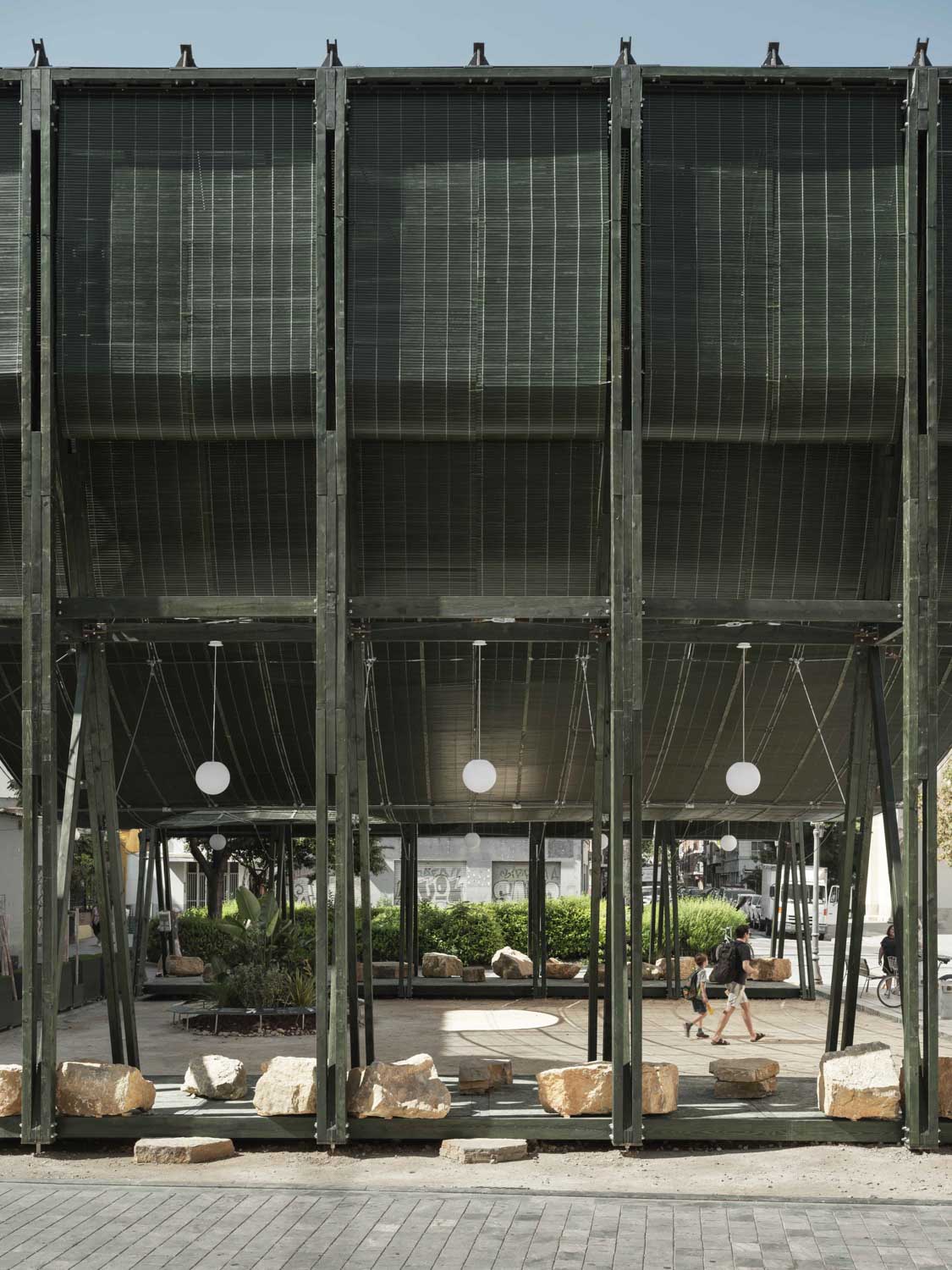
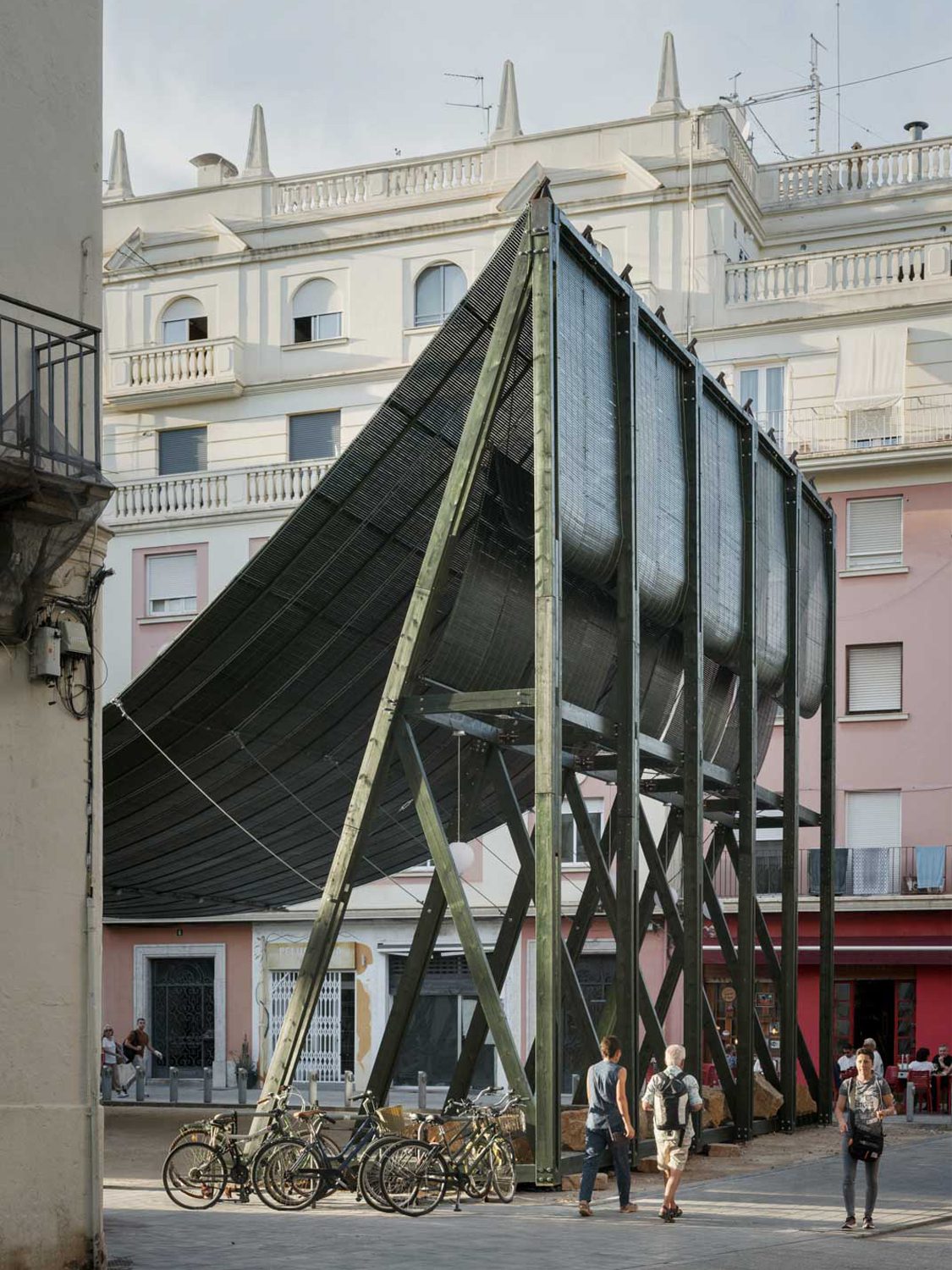
The dark green pavilion stands magnificently in the midst of Plaza Msico López Chavarri in El Carmen, the city’s historic area. Due to the removal of the residential buildings, the plaza had been left in a state of dormancy. This open and lifeless public space had not been appropriately constructed to thrive as a fully functional, high-quality public place. The arrival of TAC! and Bouzas’ pavilion became an opportunity to bring the quiet plaza back to life.

The pavilion features porticoes on both sides and rests on a modular triangular timber-framed structure, with rocks anchoring the porticoes and providing seating space for visitors. A giant blind blanket drapes over the pavilion and the two porticoes, providing shelter from the heat of the sun and creating a shaded area where activities take place during the event.
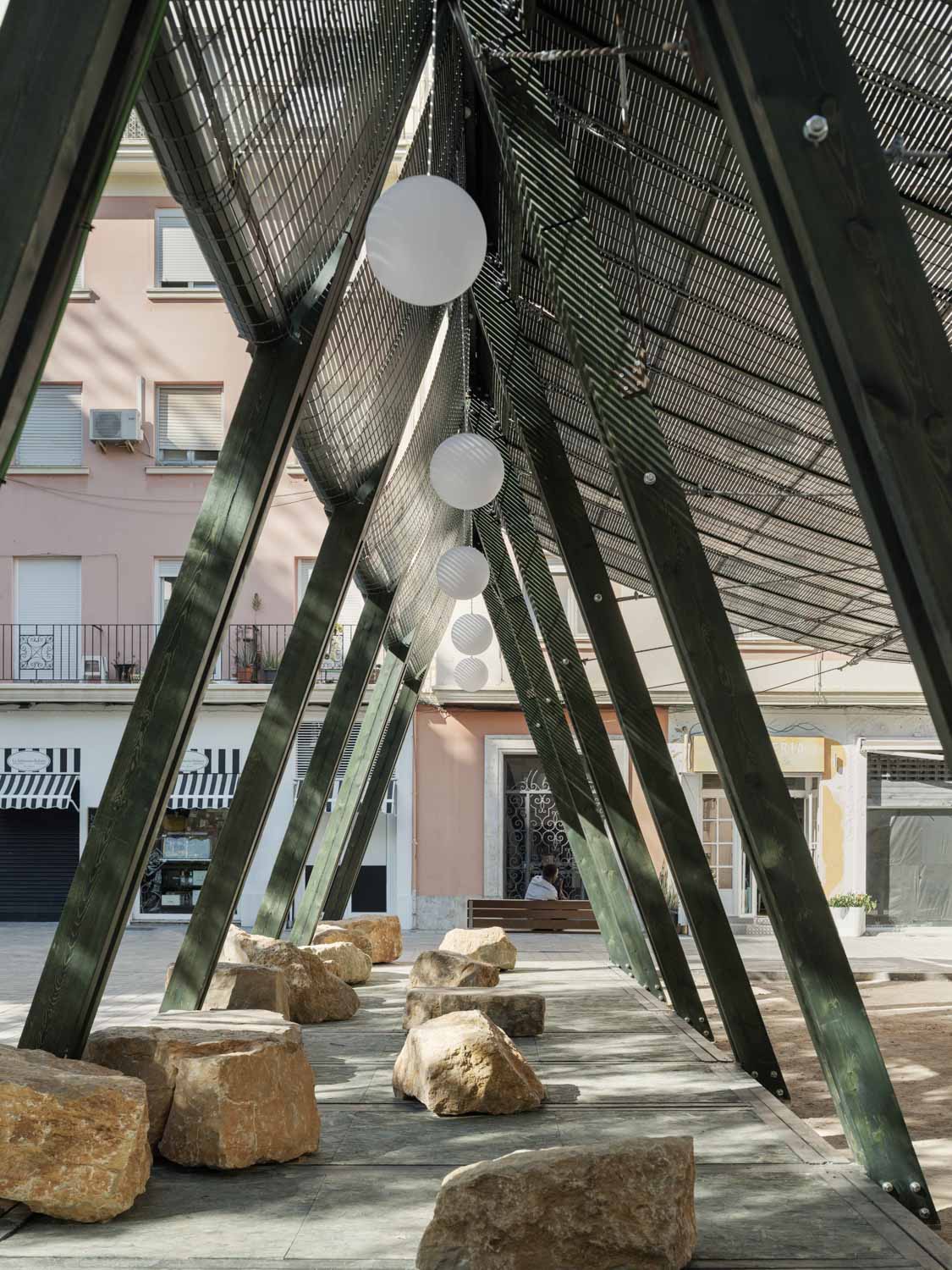
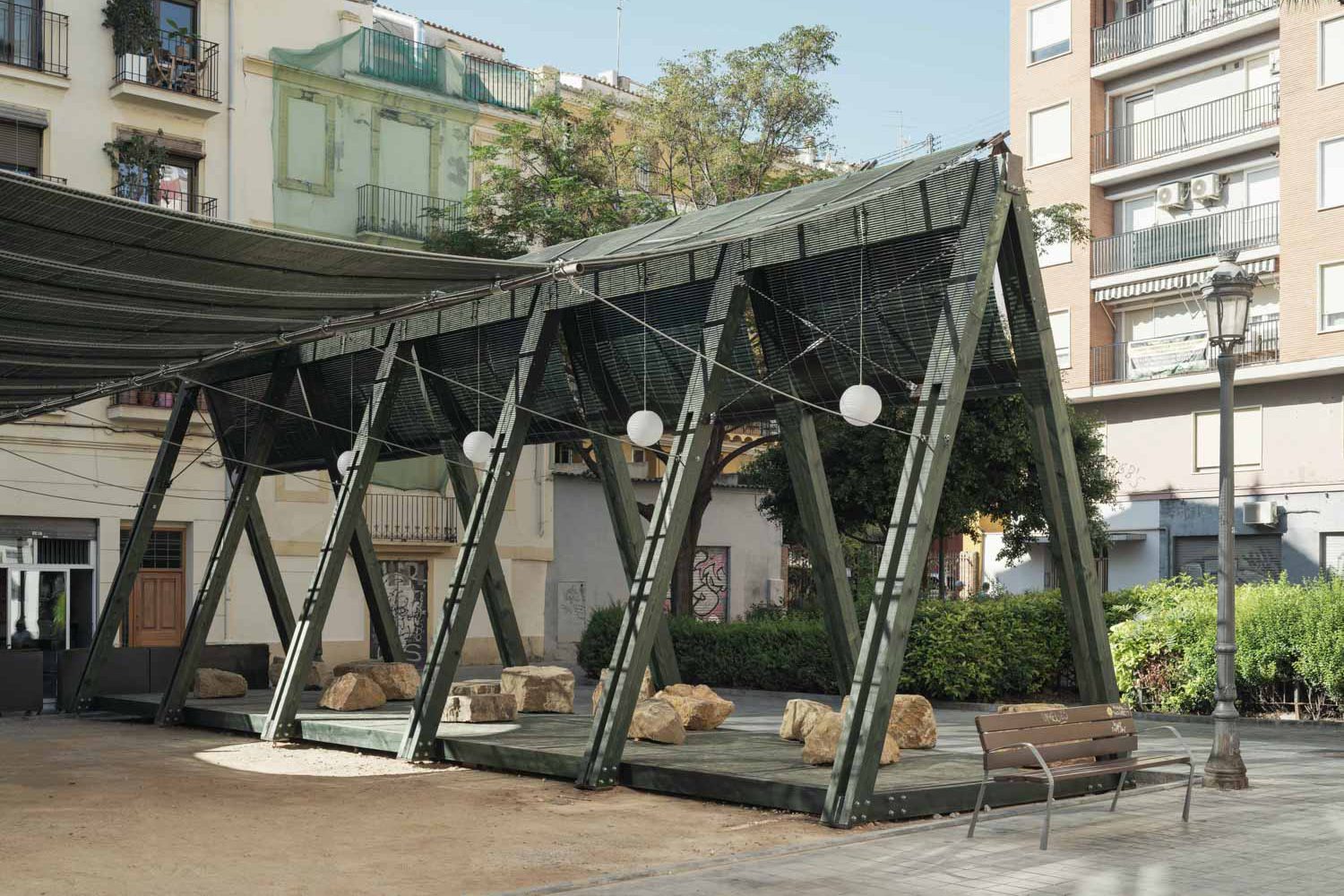
The blind extended across the structure, forming a catenary shape with the middle section hanging down by gravity. A big circular opening at the center of the blind allows a controlled amount of sunlight to shine down on a little garden. Bouzas chose dark green for the pavilion’s color, a shade reminiscent of locally manufactured blinds in this particular region of the country. To say that the Mediterráneo Pavilion features the largest blind ever created in the city would not be an overstatement.

Simply copying the appearance of the blinds would be too superficial to convey the message of environmental conservation like the architect intended. As a result, Bouzas delves deeply into the materials employed in the pavilion’s construction. The pine wood from Soria, the stones from Teruel, and the blind created by a manufacturer in Sax are all recyclable, low-embodied carbon materials that will be repurposed and donated after the event is over, including the blind, which will also be given to the community for future use like Bozas initially planned.
